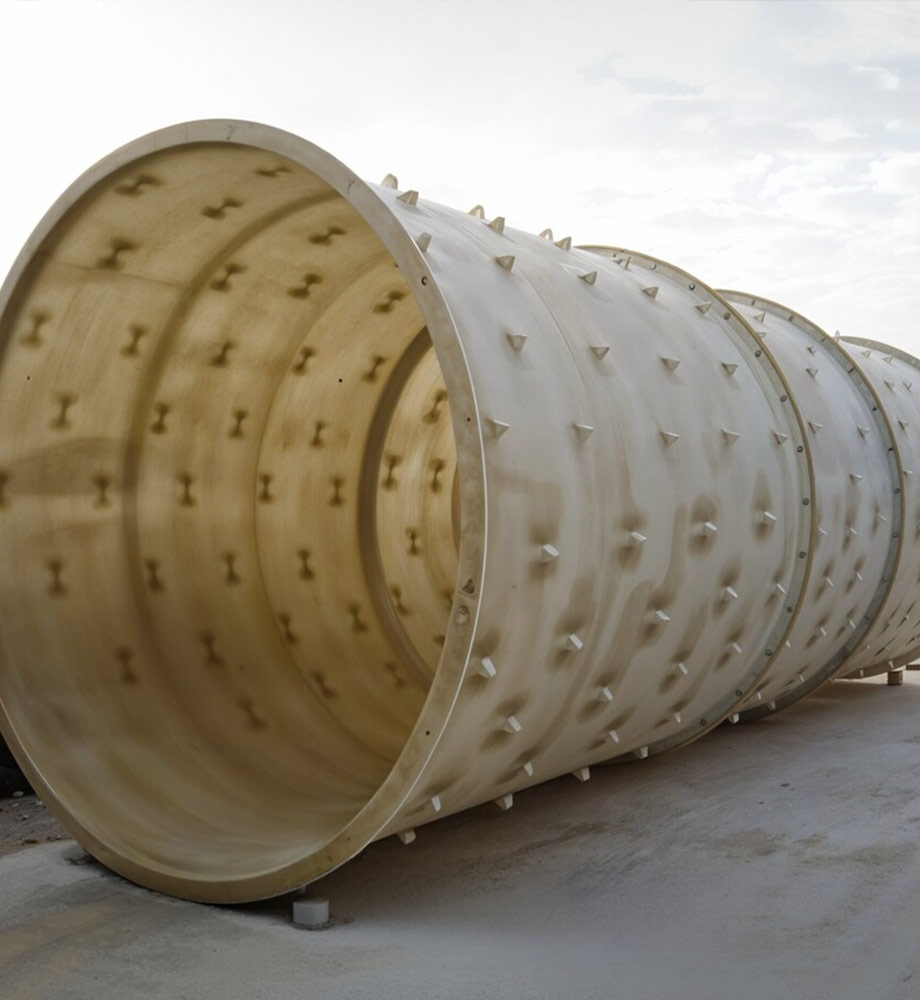Key Features
- High Chemical Resistance: Engineered resin system designed for hydrogen sulfide and sulphuric-acid environments.
- One-Piece Construction: Manufactured as rings or panels bonded on-site to create a continuous, joint-free lining that withstands soil pressure.
- Ribbed Exterior: Some liners have external ribs or grooves for mechanical grip in the surrounding concrete when backfilled.
- Custom Sizes: Available for diameters typically 600–2400 mm (24″–96″) and various depths. Thickness usually 7–10 mm.
- Slip-Resistant Interior: Textured or grated steps/ladders can be integrated; options for embedded ladder rungs or grooves.
- UV-Stable Gel Coat: The exposed top section (if any) is UV-protected for durability.
Benefits
- Structural Protection: Prevents the manhole or wetwell from degrading, sealing cracks and stops leaks that can undermine structures.
- Zero Corrosion: Unlike steel or unprotected concrete, FRP will not rust, rot or erode, so manholes can last 50+ years without rehabilitation.
- Smooth Interior: Eliminates rough concrete joints where debris and corrosion products accumulate, improving hydraulic flow and cleaning.
- Fast Rehabilitation: Liners can often be installed in an existing manhole with minimal downtime, without excavation.
- Lightweight Handling: FRP sections can be transported and inserted by two people, unlike bulky concrete rings.
Applications
- Wastewater Collection Systems: New and retrofit sewage manholes, wet wells, storm drain structures, valve chambers.
- Industrial Pipelines: Acid neutralization pits, chemical storage sumps, and any underground chamber exposed to corrosives.
- Lift Stations: Interior lining of pump stations where metal pumps and piping accelerate corrosion.
- Sea Cages & Aquaculture: Saltwater-resistant lining for aquatic enclosures.
Technical Specifications
- Resin Type: Vinyl ester or advanced polyester with corrosion inhibitors; gel coat layer on inside.
- Reinforcement: Continuous filament glass wound or stitched mat layers with total glass content ~60% by weight.
- Panel Assembly: Sealed with epoxy adhesives or mechanical clips; final joint sealed with non-sag laminating putty and top-coated.
- Compliance: Meets or exceeds ASTM D-3753 for FRP manholes; NSF 61 optional for potable considerations.
- Temperature: Suitable for typical underground temps; maximum ~50°C short-term.
Unique Selling Points (USPs)
- Tailored Retrofit Systems: We survey and design liners specifically for the existing structure, ensuring a tight fit and minimal access excavation.
- Turnkey Installation: Certified teams can handle removal of old material, cleaning, fitting and sealing so the manhole is immediately operational.
- Slip-Resistant Options: Specialty gel coats with grit or integrated ladder rungs for safe personnel access.
- Fully Tested: Liner materials and joints are factory-tested to ensure impermeability and strength before shipping.
- Minimal Infiltration: Solves groundwater ingress problems – a single liner system will improve infiltration to virtually zero.

